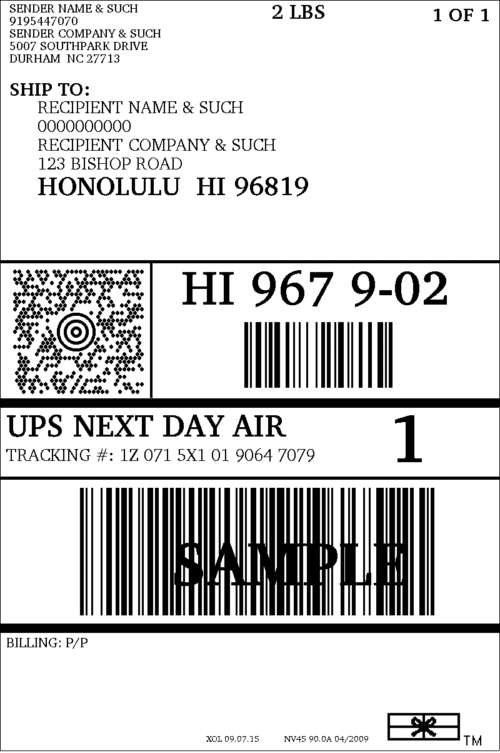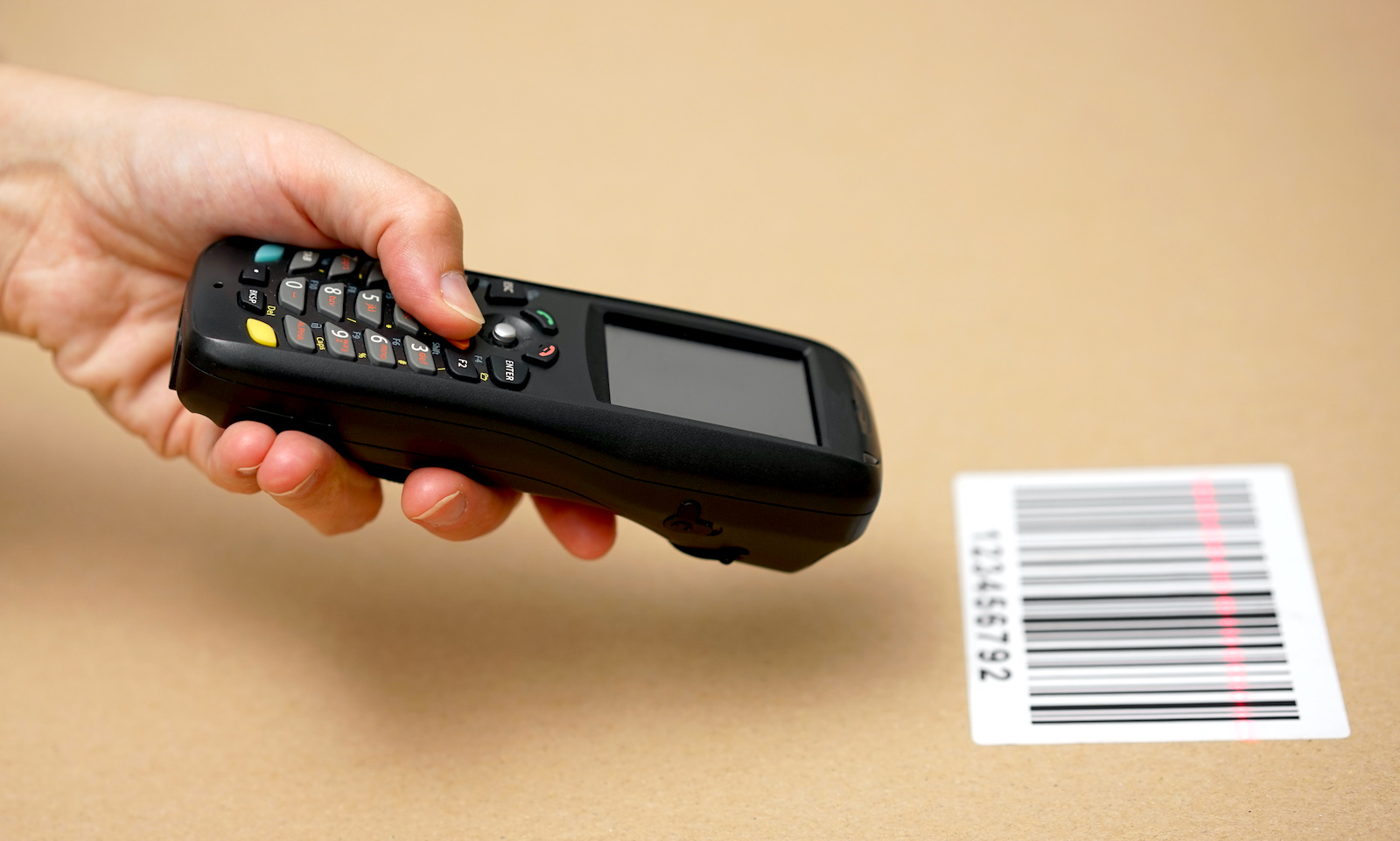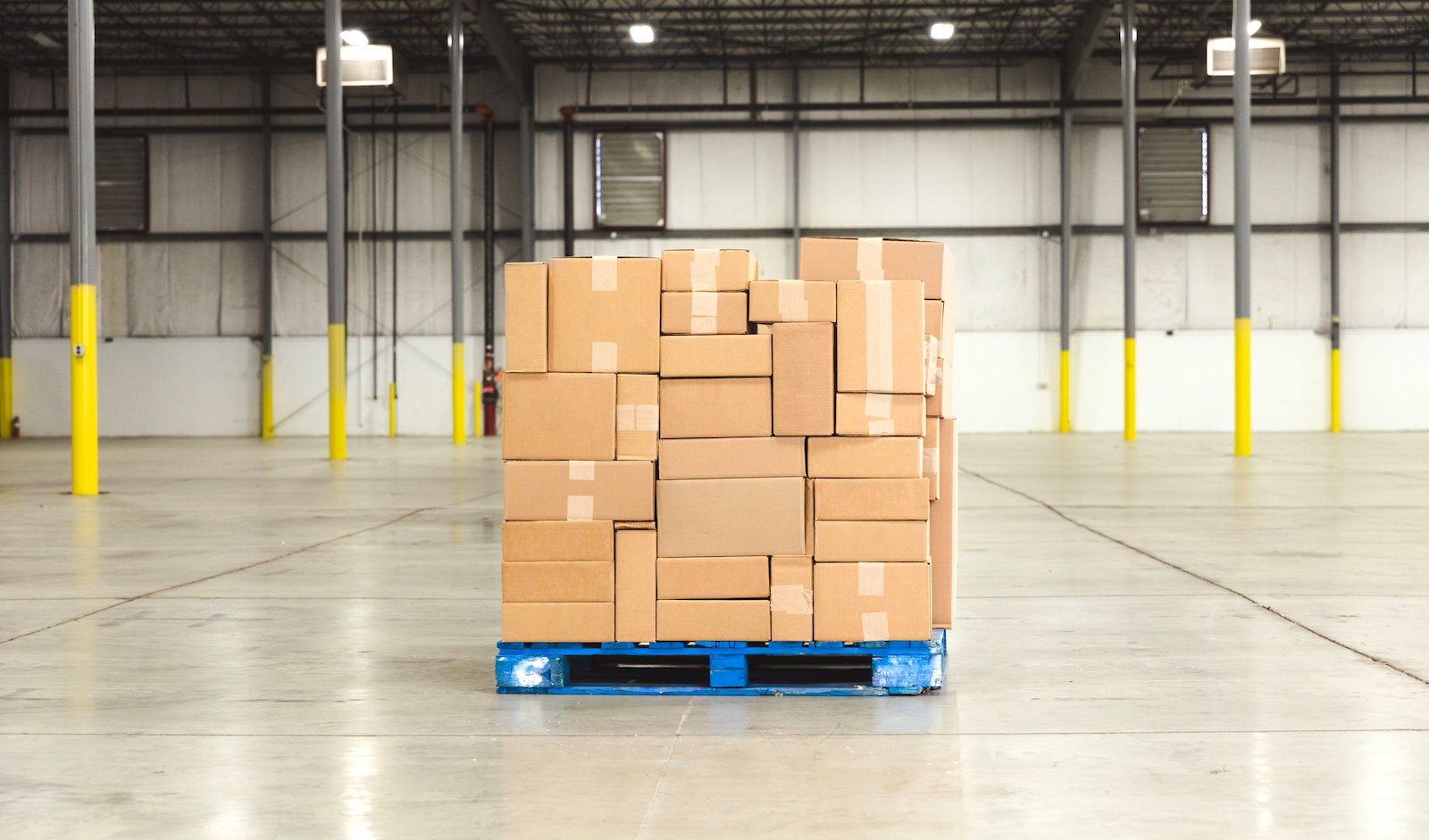Table of Contents
** Minutes
How 3PLs use shipping barcodes
The 2 main barcode types 3PLs encounter and scan
How to get barcodes added to your products
A barcode’s journey through the order process
The common barcode formats you’ll see when shipping and storing inventory
Know your options for physical barcodes
RFID: a future option for shipping barcodes?
Modernize your shipping and inventory management with ShipBob
Barcodes are important for any business selling physical goods. They are used in brick-and-mortar stores as part of the purchase and returns process, in warehouses to track inventory and packages, by shipping couriers to locate and track shipments, and sometimes on invoices to assist with accounting.
Without barcodes, modern shipping and inbound and outbound logistics processes would be more inefficient and much more error-prone. Third-party logistics companies (also known as 3PLs) rely on barcodes to efficiently run their warehouses so they can better serve the companies for whom they perform fulfilment services.
In this guide to using shipping barcodes, we’ll go over the reasons 3PLs use shipping barcodes and why you should use them too.
What is a shipping barcode?
A shipping barcode is the unique machine-readable pattern of parallel lines of varying widths, printed on a shipping label to identify a shipment. The shipping barcode is scanned at each phase of the delivery until it reaches the customer’s shipping destination.

How 3PLs use shipping barcodes
Anyone shipping ecommerce inventory and/or online orders will use shipping barcodes for better ecommerce order tracking. 3PLs encounter many shipping barcodes due to the volume of ecommerce brands they work with. Here are the main use cases:
1. Receiving inventory in the fulfilment centre
When receiving inventory from a manufacturer, supplier, or merchant, 3PLs need to scan barcodes, whether they are from parcel or freight shipments. 3PLs will have varying processes, so you must conform to their standards to prevent delays in orders, unidentifiable inventory, and potential fees from them.
2. Handing off orders for end consumers to shipping couriers
Once an order has been picked and packed and is ready to be shipped, there will be a shipping barcode on the label that’s affixed to the package. The 3PL will hand off shipments to the right courier (often daily), and the courier will typically scan it once it leaves the 3PL’s facility.
3. Receiving returns from end consumers
Ecommerce returns will vary by the merchant, but for those who have consumers ship their returned items back to the 3PL, the 3PL will need to scan the shipping barcode on the return label, packing slip, and/or whatever documentation the 3PL requires to receive returns.
The 2 main barcode types 3PLs encounter and scan
There is more than one type of barcode you’ll find in a 3PL’s fulfilment centre.
1. Shipping barcodes (on shipping labels or receiving slips)
As mentioned above, a 3PL will use and scan shipping barcodes when receiving inbound inventory and shipping outbound packages (for both direct-to-consumer and wholesale orders). This helps with tracking everything from inventory replenishment a stockout to delivery exceptions that are stuck in transit to the end customer.
1. Product barcodes (on the products they receive, store, and ship)
While 3PLs use storage location barcodes for each individual bin, shelf, or pallet location in a fulfilment centre, the use of barcodes on the individual unit level can be an even more secure and optimal way to store inventory.
Having barcodes on any new SKUs that are sent to a 3PL’s fulfilment centre can help improve accuracy. Because 3PLs fulfil orders for multiple brands (unlike an individual warehouse used by one brand), barcodes help to make sure the right products are being shipped to the right customer from the right brand.
Warehouse employees can walk around with a mobile barcode scanner that automatically updates systems such as a warehouse management system with just a simple scan of a barcode.
Here is why 3PLs use product barcodes:
Count stock levels
Scanning barcodes is an easy way to automate inventory tracking, automatically updating inventory counts as opposed to physically counting every piece of inventory on pen and paper and then sending that number off to the merchant. Instead, the merchant can check their 3PL’s dashboard for the most up-to-date inventory counts.
Compile reports
To help with warehouse management, barcodes can contain far more information than just the SKU number. The use of barcode may be used to help generate reports about sales and stock levels faster so inventory can be promptly restocked based on the reorder point, whether in the fulfilment technology or the ERP inventory system.
Minimise errors
Counting and tracking inventory by hand can lead to many issues, especially if you’re warehousing hundreds of products. Human error is commonplace whenever counting or sorting comes into play. With barcodes, 3PLs and other shippers can easily account for stock coming in and out with fewer errors.
How to get barcodes added to your products
Don’t have barcodes yet? Talk to your manufacturer, co-packer, or screen printer. It should be a straightforward request. Smaller merchants can use sites like Avery.com that offer templates, then purchase packets of labels from an office supply store (using the correct design so it lines up with the online templates), print them out, and attach them to products.
If you’re adding barcodes to your existing products for the first time, be sure to communicate with your existing 3PL if you have non-barcoded products in their fulfilment centre. This way, they can deplete any remaining inventory first and prevent commingling units from the new batch with the old batch. Otherwise, they may have trouble identifying the inventory and sending back accurate stock levels to you.
A barcode’s journey through the order process
Barcodes are involved in almost every step of the supply chain. They’re present once a product is shipped from a manufacturer, and also when a package reaches the end customer.
For each physical movement that happens in the warehouse, there should be a digital counterpart to track it remotely and historically.
1. When products are shipped from manufacturer/supplier
Products that are barcoded will get that way at the manufacturer’s or supplier’s facility. When inventory batches are ready to be shipped from the manufacturer to their next destination, a shipping barcode will be added as part of the label, as well as any documentation needed for the 3PL (which may also include additional barcodes).
2. When products arrive at the warehouse
Inventory gets received by warehouse staff and is scanned in at arrival to ensure the products and quantities that the merchant said would arrive did arrive as expected. Barcodes will also be scanned once inventory is stowed in the inventory storage locations.
3. When a product is retrieved from its storage location
When a customer order comes in, a picking list is generated. The picker assigned to the order will know exactly where to get the ordered item(s) and the quantities. When the picker arrives at the inventory’s location, they will scan the product and/or location identifier before they can move on to the next item or order.
This removes the ordered units out of the available inventory count. As inventory is depleted, alerts may be triggered for the merchant, prompting a new purchase order to be made.
4. When a courier picks up the package from a warehouse
After an order is packed, a label is put on the box or mailer. Shipping couriers will do pickups at warehouses and should scan the package when they leave the facility. This can signify that the package is out of the 3PL’s hands and in transit.
5. When the shipment is in transit
Shipments have to travel a far distance, often across the country. Packages may be transported from one regional sorting facility to another. The courier should be scanning this as it happens for a more accurate picture of where the shipment is, which is especially helpful if it gets held up for some reason.
Last-mile delivery refers to the final leg of a parcel delivery, where a package is transported from a courier hub to its end destination. At this point, it should be scanned at a local facility before it begins its route to the customer.
6. When the product is dropped off at its shipping destination
When a shipment arrives at the shipping destination, the courier will scan it a final time as a confirmation that it’s reached its destination. At this point, the order should be received by the customer. If a delivery attempt was made but not successful, the package may be returned to a local sorting facility until the next attempt can be made.
If the shipment was for a B2B ecommerce partner, they may use the shipping barcode for their own inventory numbers and will adhere their own barcodes to the new inventory.
The common barcode formats you’ll see when shipping and storing inventory
There is a wide range of barcodes, each with their own pros and cons. Depending on the products you sell and warehouses you work with, you may choose a different type (e.g., what works for medical products may not be needed for other less regulated products).
Alphanumeric barcodes
These barcodes can be used to track and collect data. They can hold larger amounts of data than their numeric cousin. They consist of UPC, EAN, MSI, and Codabar barcodes.
Numeric barcodes
Numeric barcodes are the same barcodes you’ll see as hang-tags on a shirt or something else in a store. These are simple barcodes used for basic inventory management and even in self-checkout capabilities.
Datamatrix barcodes
Datamatrix codes are used to label small items and goods. Their tiny footprint makes them ideal for small products in logistics and operations. For example, the US Electronic Industries Alliance (EIA) recommends that they be used to label small electronic components. Similar to custom QR codes, they have high fault tolerance and fast readability.
Know your options for physical barcodes
Depending on the products you sell, the barcodes used for them can vary. For example, clothing usually has barcodes on a tag connected to the appeal item to prevent the barcode from actually being embedded on it.
Adhesives
Adhesives barcodes stick on packages or boxes. They’re usually made of synthetic materials so they don’t wear away over time. They’re easy to find and don’t disrupt the product since they can be peeled off if needed.
Hang tags
Hang tags are usually used on clothes or other retail items that can be clipped off by scissors once purchased and ready to be used. They’re attached via a short string or piece of plastic.
Outer packaging
These barcodes are added directly to the product’s packaging but not part of the contents themselves. An example is a candy bar wrapper, where the barcode is discarded just before the product is ready to be consumed.
RFID: a future option for shipping barcodes?
Radio-frequency identification aka RFID is a newer barcode technology. Barcodes and RFID are different, but also similar in many ways. RFID is easier to read than barcodes and can be read in batches, but requires much more high-end tech to read.
RFID tags don’t require a close scan like barcodes, so it’s possible to read them at a distance for fast inventory processing. They give improved visibility with the potential for more frequent updates and scanning locations, as inventory check-in, counting, and shipment verification can be done quickly and automatically where the technology is supported.
RFID tags cost significantly more than barcode labels, and they utilise specific readers that must be purchased from the limited number of RFID equipment manufacturers. Given the incredible initial costs required, it is likely far off from becoming mainstream anytime soon.
How ShipBob uses barcodes
Every action ShipBob performs — receiving, counting, picking, packing, returns, etc. — is handled significantly more accurately when a barcode is adhered to each item. Learn more here.
For these processes to be as reliable and seamless as possible, we recommend all customers use barcodes for each individual item. Before adding barcodes in the ShipBob dashboard, they must be physically attached to products. Barcodes should be well presented and scannable.
Additionally, we have measures in place to track every movement in our ecommerce warehouses, which are powered by our proprietary software.
From receiving and stowing your inventory, to shipping your customer orders and handling returns, we use best practices and provide the best visibility into your products and orders.
Modernize your shipping and inventory management with ShipBob
ShipBob is a 3PL that provides warehousing and logistics services for thousands of ecommerce merchants. Learn more about ShipBob’s robust fulfilment network, our proprietary technology, and warehousing expertise by requesting a fulfilment quote below.



